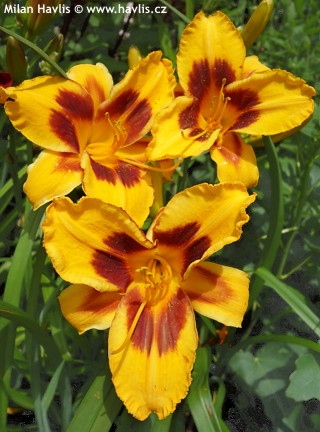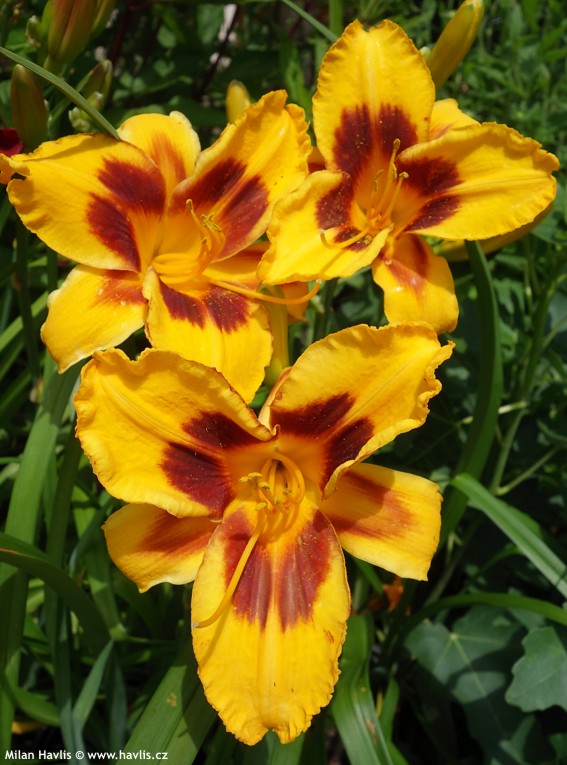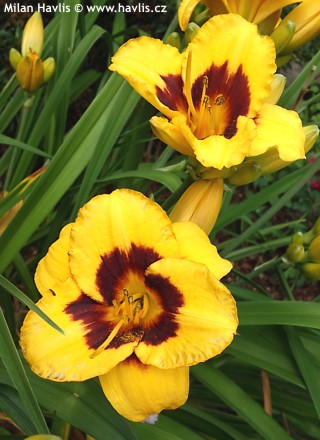Hemerocallis 'BLACK EYED SUSAN' daylily (tetraploid)
Hemerocallis
Daylilies are flowering queens for one day. Each bloom lasts a day but there is no need to worry – every stem bears more blooms and as the plants grow older they have numerous stems each. This low-maintenance perennial is a miracle for those who have limited time to spend looking after their gardens because apart from occasional watering on hot and dry summer day it needs ABSOLUTELY NOTHING. And still it can leave us gazing at their beautiful, lily-like blooms of every possible colour you can think of (except for blue and black).
Black Eyed Susan is a common name for rudbeckia plant, however, in this case, owing to its similarity it is also a variety name for this beautiful daylily. It is a large-flowered tetraploid (with 4 sets of chromosomes: total 44 in each cell) with flowers that are 14 cm across, rich golden yellow with a large crimson red to reddish brown eye. Extra strong stems are 60-70 cm tall and produce flowers from second half July for 3-4 weeks. Leaves are rather wide, deciduous.
Bred by Don C. Stevens (1930-1983) as his very last breeding in the summer of 1983. It is a cross between (Feather x Brindlee Beauty) and Bandit Man. Don Stevens is one of the most renowned daylily hybridizers who spent his life teaching English in his home town Reading in Massachusetts, USA, breeding daylilies, and upon retirement designing and creating custom-made jewelry by faceting of gemstones and silversmithing. His daylilies always had a large eye which is why the American Daylily Society, after his death, set up a Don Stevens Award voted annually and given to the best contribution among daylilies with a conspicuous eye or band, and the first award was given in 1985 to Siloam Bertis Ferris.
The leaves are deep green, strong and healthy. They appear early in the spring and persist until winter unlike spring bulbs whose leaves wither away after flowering. Apart from occasional slug attack there are no pests or diseases they would suffer from. Put your day lilies on a sunny spot and fertilize it for better flowering every spring, if you want to. It tolerates all types of soil, preferably it likes moist soil. Very hardy to min. -40°C (USDA zone 3).
Last update 21-07-2017






































